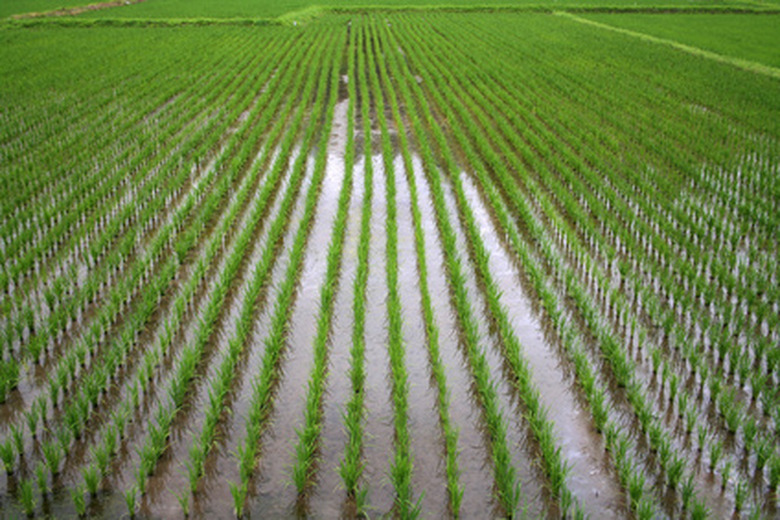Life Cycle Of A Rice Plant
The rice plant is an annual grass that produces an edible seed, which is the actual rice. It grows rapidly and can mature from seed to a crop ready for harvest in 5 months or less. Rice is an aquatic plant and is commonly grown in flooded fields. Its popularity as a food item has led to its cultivation on a global scale. Rice is a staple food in the diet of many cultures worldwide.
Germination
The life cycle of rice begins with a seed. The rice seed consists of the hull, an outer protective coat; the embryo, which forms the actual plant; and the endosperm, a starchy part that provides food for the seed when it begins to grow. When the seed is sown in watery conditions, such as a flooded rice field, it will sprout. Cultivated rice is sown in the spring.
- The rice plant is an annual grass that produces an edible seed, which is the actual rice.
Early Vegatative Stage
As the seed grows, it will put out roots that will grow down into the soil beneath the water. The roots anchor and support the plant and provide nutrients from the soil. Leaves will also emerge and begin to grow toward the surface of the water. In cultivated rice, the young seedlings are harvested in bunches. These are then separated into individual plants and are then replanted in the flooded rice fields in evenly spaced rows to allow the plant to grow to full size. This improves the yield of seeds the plants will produce.
Late Vegetative Stage
This stage is also referred to as the tillering stage. When the plant is mature and has reached a height of 3 to 4 feet, it will produce a reproductive stem called a tiller. This usually occurs around 40 days after sowing. The stem will continue to grow, eventually producing a flower head.
- As the seed grows, it will put out roots that will grow down into the soil beneath the water.
- These are then separated into individual plants and are then replanted in the flooded rice fields in evenly spaced rows to allow the plant to grow to full size.
Reproductive Stage
The flower head, commonly referred to as a spike, will then produce 100 to 150 tiny flowers. Each flower is small and forms along several long, thin stems that radiate upward from the tiller. These flowers, once pollinated, will then form seeds. This usually takes around 30 days to complete.
Ripening Stage
During the next 30 days, the rice seeds will eventually ripen, turning golden brown when fully ripe. Temperature and climate changes can effect the ripening process. Cooler, rainy weather can lengthen the process, while warmer sunny conditions can shorten it. Once completely ripe, the seeds can then be harvested for food. The remaining plants then die to complete the life cycle. Commercially grown rice plants, once harvested, are usually tilled back into the soil.
- The flower head, commonly referred to as a spike, will then produce 100 to 150 tiny flowers.
- Once completely ripe, the seeds can then be harvested for food.
